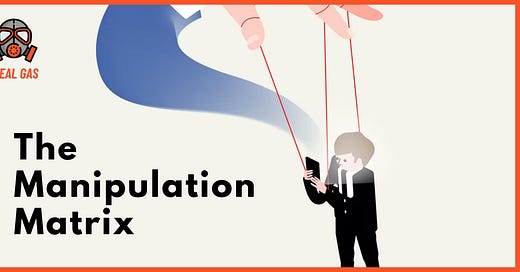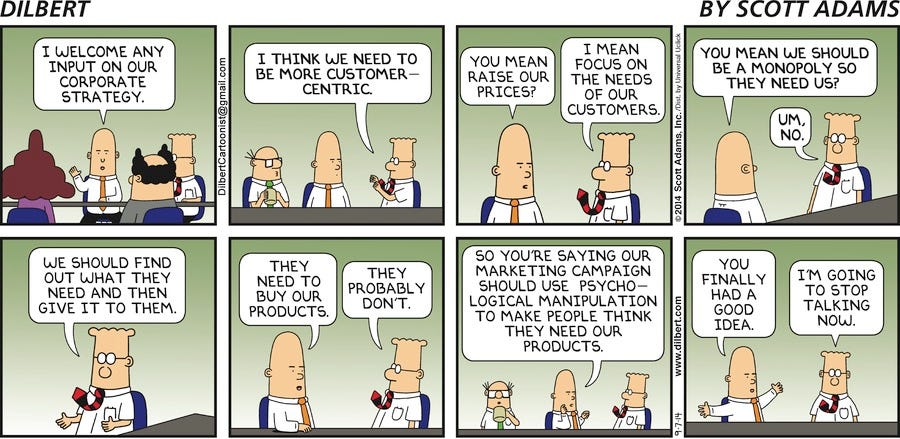Worldbuilding. We have been ranting about it since a last few articles. One can say that we are at cusp of big change. Web3, blockchain applications, LEO constellations and Metaverse are all so promising and confusing simultaneously, making us want to be a part of them.
But then, we are always on the cusp of something interesting – the most boring day in history, the 11th of April 1954 was also 67 years back! We are always onto something, building something (or helping really wealthy people build), and those of us who are not neck deep in sweat from toiling hard, find the luxury to ask questions. Questions of ethics, questions of morality.
The leaps of progress in fields of behavioral economics has helped us understand how businesses influence or manipulate people’s choices. Little “Nudges” are extremely effective in steering consumer behavior. But it has also been the source of trouble - consider how Facebook’s “like” button has contributed to digital addiction and the way YouTube’s recommendation algorithm has fueled extremism and hate. When do we know when we are crossing the line? Is there even a line?
Question hour
The reason Mahabharata intrigues me, is because it sets aside the concepts of good and evil, black and white, and instead focuses on all shades of grey. But pick any popular story and it will have a moral, it will choses sides, and try to fit your life in simple little frameworks. That is because our mind loves frameworks – mental models that eliminate as many variables (the greys) and make our decisions and choices easier.
And for the value creators, we have found one too. Nir Eyal, author of Hooked, proposes this Manipulation Matrix – to keep us from being evil while manipulating, by asking two pertinent questions:
1. Will the product help users materially improve their lives?
2. Will I use the product myself (or your children or so)?
And let us hook these yes and no(s) into a neat 2x2 matrix (Because that’s what we do the best)
The Facilitators:
“Build the change you want to see in the world”
- Mahatma Gandhi, remixed
When you create something that you will use and believe makes the user’s life better, you’re facilitating a healthful habit. Exceptions are present, of course. You can’t create a coding for kids when you are adult yourself.
Whether getting users to exercise more, creating a habit of journaling, or improving back posture, these companies are run by entrepreneurs who desperately want their products to exist, firstly to satisfy their own needs (Like a certain billionaire’s need to stalk girls from college, and then everyone in the world led him to create a highly successful social media website)
But what about when an addiction to a well-intended product becomes extreme, even harmful? For a product in this quadrant? Well, in any normal distribution, a small percentage of people will be on the extremes.
The Peddlers:
The name may sound demeaning, or cool, basis your interests. But the fact is that there is nothing wrong in being a peddler. You are able to make material contributions to other lives, and if you are able to convince people about something you are not convinced about yourself, well my friend you played it well. Some experts argue that this might not sustain due to the lack of a drive. But then people are adept at convincing and bending their purposes to retro-fit what they are building.
The Entertainer
In fact, sometimes makers just want to have fun. If not facilitators, we are certainly the entertainers. Creators make something that they would use but can’t in good conscience claim improves the lives of their users, they’re making entertainment.
Entertainment is art and is important for its own sake. Art provides joy, helps us see the world differently, and connects us with the human condition. But then games like Farmville and Angry Birds engross users for a while, but then are relegated to the nostalgia along other hyper-addictive has-beens like Pac Man and Tetris.
The Dealer
“What do we sell?” “We sell happiness”
Creating a product that the designer does not believe improves the user’s life and which the maker would not use is exploitation. In the absence of these two criteria, presumably the only reason you’re hooking users is to make a buck.
De-centralize
We are always enthralled by the idea of overthrowing the ones in power, distributing control and resources amongst the commoners. We want to stop with the manipulation, and the exploitation. But then nobody tells us what happens next. Will a new body replace the old one? Will the cycle repeat again?
While exploitation is present, it is the same system that incentivizes value creation as well. Web3, for instance, tries to answer these questions, by promising truly de-centralized networks. But early reports from DeFi (Decentralized Finance) share that “Blockchain insiders are likely to reap gains” from its adoption. A quick look at the funding hoods of the “community-operated” platforms reveal the usual names like Andreessen Horowitz (who backed Meta, Slack and Skype).
Maybe its their way of giving back to the society, by encouraging benevolent platforms, and their vision of the future. But the only way for us to participate is to dive into it ourselves. See you again in the next piece, in our attempt to create some value.






